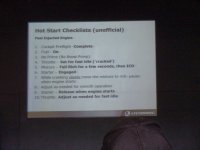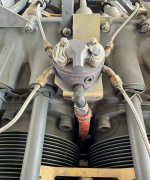I have a 14 with the IO-390 and an unusual problem. After a flight, we cannot get this thing to start. We’ve tried a variety of hot start procedures to no avail.
Cold starts work great every time. Hot start procedure #1 is to keep boost pump on with mixture lean and slowly bring it to full as the engine starts to turn over. Procedure #2 is to set full throttle, boost pump on, mixture forward until stable fuel flow, then back to lean, engage starter, and finally reduce throttle and increase mixture as engine turns over.
Perhaps you have an idea for a different hot start procedure, but I can assure you both of the above worked great for a long time. If #1 didn’t work, #2 always worked. Then they both suddenly stopped working.
Some notes on the issue:
And also, if that’s the case, why would the fuel pressure sensor be x-ing out? And why does that sensor show an x-ed out reading only when the engine is hot?
Cold starts work great every time. Hot start procedure #1 is to keep boost pump on with mixture lean and slowly bring it to full as the engine starts to turn over. Procedure #2 is to set full throttle, boost pump on, mixture forward until stable fuel flow, then back to lean, engage starter, and finally reduce throttle and increase mixture as engine turns over.
Perhaps you have an idea for a different hot start procedure, but I can assure you both of the above worked great for a long time. If #1 didn’t work, #2 always worked. Then they both suddenly stopped working.
Some notes on the issue:
- When this occurs, on the G3X the fuel pressure will actually x-out (shows an x over the instrument) rather than reading zero
- About a year ago the boost pump was moved by my mechanic from the bottom of the engine (pilot side), to near the top of the engine on the co-pilot side near the firewall. This was to remedy an issue in which the fuel flow would show a decrease of 1gph whenever the boost pump was turned on during cruise. That wasn’t necessarily a problem, but he attempted to fix it by moving the boost pump position claiming that the previous position caused there to be an air bubble in the pump that reduced the fuel flow sensor reading.
And also, if that’s the case, why would the fuel pressure sensor be x-ing out? And why does that sensor show an x-ed out reading only when the engine is hot?






